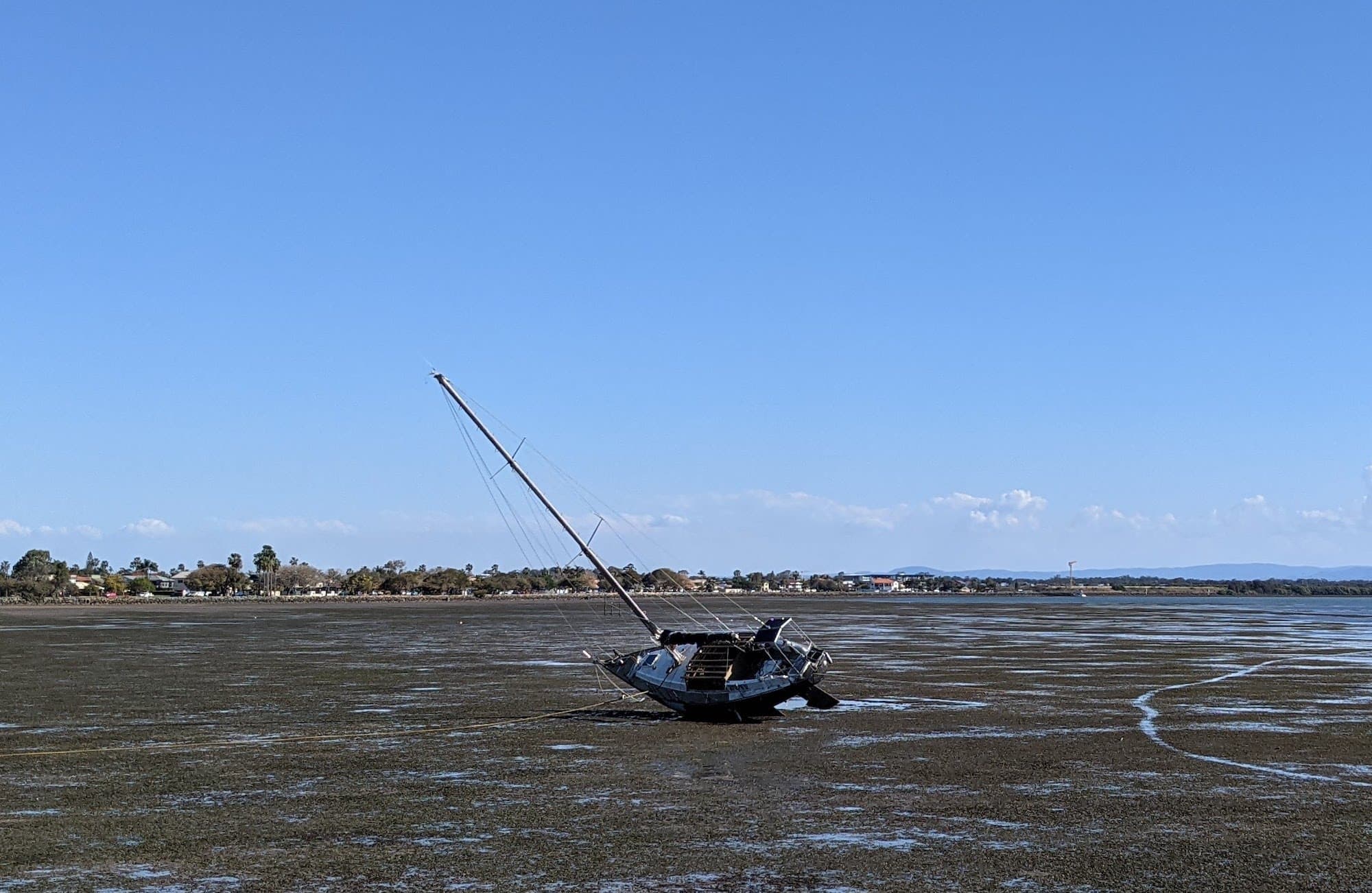Last week I got my boat licence in Queensland, and since nobody really explained in detail exactly how to do it or what to expect, I thought I'd put down these notes.
In short, the easiest way to get your boat licence is to do it through a registered training provider. I went through ABC Boating and it cost me $300 — I had an off-season discount.
ABC Boating is a national provider in Queensland with franchises all over. The licensing requirements are different state to state, and each franchise owner takes care of the local requirements.
You can also do your jet ski licence on the dame day (in Queensland they're separate licences) for a bit more money. Makes sense if you want to ride a jet ski, but I find that idea a little uninteresting (I like riding motorcycles, but marine craft for me are a way to get to cool places or relax out on the water — so boats are better). I'd like to do it for fun, but it's not urgent.
In short, to get your boat licence in Queensland, Australia, you:
- Sign up for the 1-day course
- Do the preparation work, and pass a sample test online
- Show up to the 1-day course and the first thing you do is the real test
- Do the training (about 1-2 hours of skill work, in a group, taking turns)
- Do the practical assessment.
About the Preparation Work for the Test
The preparation work for the test involves sitting through a few hours of videos when you do it through ABC Boating.
There are four major sections for the training
- Trip planning — 29 subsections
- Navigation — 15 subsections
- Weather and tides — 8 subsections
- Emergencies — 7 subsections
The first video took 30 minutes. But it contained no assessable information (or maybe it did, but that was repeated later), and was very general stuff like "how to unload your boat from the trailer".
Most videos took about 1-2 minutes. There was also text underneath them.
Here's what the sections were about in general:
- Trip planning — What to do before setting out. Pre-departure checks, safety checks, what safety gear you need for various vessels and water conditions, registration requirements, and licence requirements.
- Navigation — Reading markings, e.g. what the colours of the buoys and signs mean. Also stuff about speed limits, using your GPS, and special rules for various places.
- Weather and tides — An overview of how to read weather maps and tide charts. Basically "don't go out if it looks stormy or if heavy winds are forecast". The stuff on tides was interesting (e.g. tides can change water level by ~1m, or as much as ~12m in some parts of Australia!
- Emergencies — Your obligation, what to do in various kinds of emergencies, and how to report things in

Even though the course is quite detailed, it's superficial in a lot of ways. It's just the minimum needed to keep you out of danger.
At the end of the prep work you do a 50-question sample test. You MUST do this! Do this because
- They need you to, and
- It's almost identical to the actual test.
I'd suggest you do the sample test the day before the actual test. Give yourself that day to learn the stuff you didn't know.
About the QLD Boating Test
Any time someone says "test" it's OK to freak out a bit. But this test is easy — if you've done the sample test. It's almost impossible to fail because they explain what you did wrong and then ask you to answer those questions again.
The test involves 50 questions and you have to get them ALL right.
A few of the questions are technical/complex things like:
- What does the dot-diamond-dot marker on a boat mean?
- When going upstream, back to the dock, on what side should the red port marker be?
- Who has right of way in these various scenarios? (class of boat, direction of travel, etc.)
- What does a R over Y flag mean? (with the pictures of the flags)

Then there are some easier questions like
- What is a boat master responsible for — effective preparation, safety of the vessel, communication to authorities, or all of the above?
- If there's a storm warning, should you go boating?
- If there's a fire, what's the first thing you should do? Cut the engine, turn around, or call for help?
Many of them (like the last ones) are common sense. But you might get caught out by the more technical ones involving light patterns.
If you get the questions wrong, the examiner doesn't make you do the whole test again. The examiner will point out which ones you got wrong, re-explain the content, and then ask you to choose the correct answer.
At least, that's the case if you get just a couple wrong (as some in our room did). If you get a large portion of it wrong, you might be in more trouble.
Some of the content of the ABC Boating Boatsafe course was outdated. I was a bit annoyed, but none of that was in the test. For example, in the videos, someone mentioned registration lettering had to be 200 mm high, when it had become 150 mm. In other parts they repeatedly mentioned a registration sticker had to be affixed in certain places, but this was no longer a requirement. None of this mattered in the end.
So in summary
- Do the prep work
- Do the sample test the day before
- Don't worry :)
About the Training and Practical Test
To get your boat licence, you have to do some practical training and then a practical test.
The training is essentially
- How to operate the boat at low speed, doing simple piloting
- How to operate the boat at high speed (figure eights, crossing wake)
- How to dock
- How to do some emergency procedures (e.g. a hard stop)
- How to do some tricky piloting, like coming to a dead stop at a certain point in the water at a mooring, or next to a person
If you have reasonable hand-eye co-ordination, the practical training isn't difficult.
Some of the trickier things for our group were
- Finding that sweet spot with the throttle to keep it going a certain speed. Every throttle is different, though.
- Docking. The "parallel parking" procedure is a little counter-intuitive. Took us each 3-4 goes to get OK with it.
- Coming to a dead stop at a mooring. It's very hard to stop at a particular point, particularly heading into the wind as we were.
After each bit of training, the instructor asked us to do it unassisted, which we did — and we all passed.
How to Get your Actual Boat Licence
Once you've passed the written and practical tests, you have a provisional licence. You still have to get your actual boat licence! You have six months to do so.
You have to go to Queensland Transport and Main Roads, taking with you the documentation saying you passed the Boatsafe course.
You fill out a form there, applying for a licence.
You pay a fee (about $110), and they mail you a new licence saying "This person is allowed out on the water", for better or worse.
As of 2021, that licence is perpetual — you never have to renew it.
What Can You Do After the Training?
After the training, you're legally certified to pilot boats out on the marina!
But really, we learned just how much more we had to learn.
Certain things are still very intimidating, like
- Crossing a bar (to go out to sea). I expect to leave this for a day in the distant future.
- Parking
- Navigation
- Using the radio (I want a radio license now)
- Emergencies (like if the dang thing catches fire, like seems to happen often in the news)
- Potential emergencies, like sickness
- Er... everything
So what we DON'T want to do now is go out and buy a boat. Next step is to do some rentals. Or maybe get a radio license... that seems cool.

